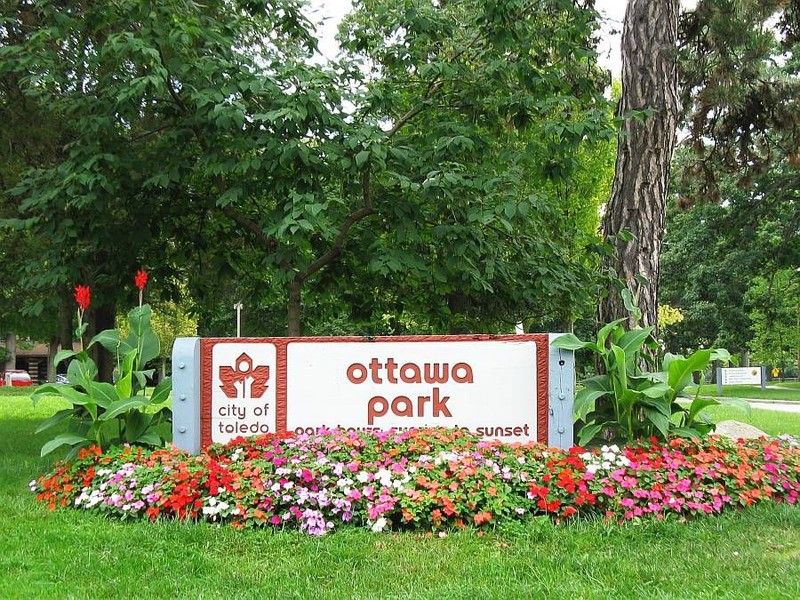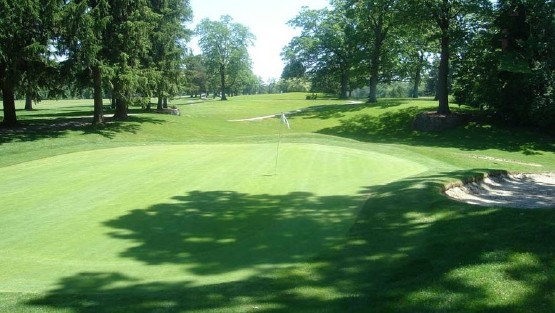Ottawa Park
Introduction
Text-to-speech Audio
Images
The entrance to Ottawa Park, which was honored with a historic marker in 1987.

A golf course in Ottawa Park

The Ottawa Park Amphitheater

Backstory and Context
Text-to-speech Audio
In 1891, Toledo resident Sylvanus P. Jermain petitioned for a bond issue that would provide funds for a new park. He was successful, and the city bought 280 acres of land from farmer John Ketcham the next year. Unfortunately, the land was swampy and had to be drained before much work could be done. By 1897, roads, walkways, and trolley lines had been added to the park, which was based on a design by the “Father of American Landscape” Frederick Law Olmsted, who also designed Central Park in New York. During the 1930s and 1940s, the WPA (Works Progress Administration) built the amphitheater and created Walden Pond. In the second half of the 20th century, the local police department turned the former Ottawa Park Nature Center (built 1927) into a museum, and artist David Black of Columbus created the Ottawa Gate Sculpture in 1994.
Sylvanus Jermain would later become known as the “Father of Toledo Parks and Boulevards” for his work as the President and Chairman of the Board of Parks Commissioners. Jermain oversaw the development of parks throughout the city of Toledo in the Riverside, Ottawa, Walbridge, and BayView neighborhoods. He was also treasurer of the Woolson Spice Company for twenty-six years and wrote the first rules of U. S. golf in 1907.
Sources
Sylvanus Pierson Jermain. Ottawa Park. Accessed October 25, 2018. http://www.ottawapark.org/linked/spjermainnopics.htm.
Home. Ottawa Park. Accessed October 25, 2018. http://www.ottawapark.org/. Photos source.
